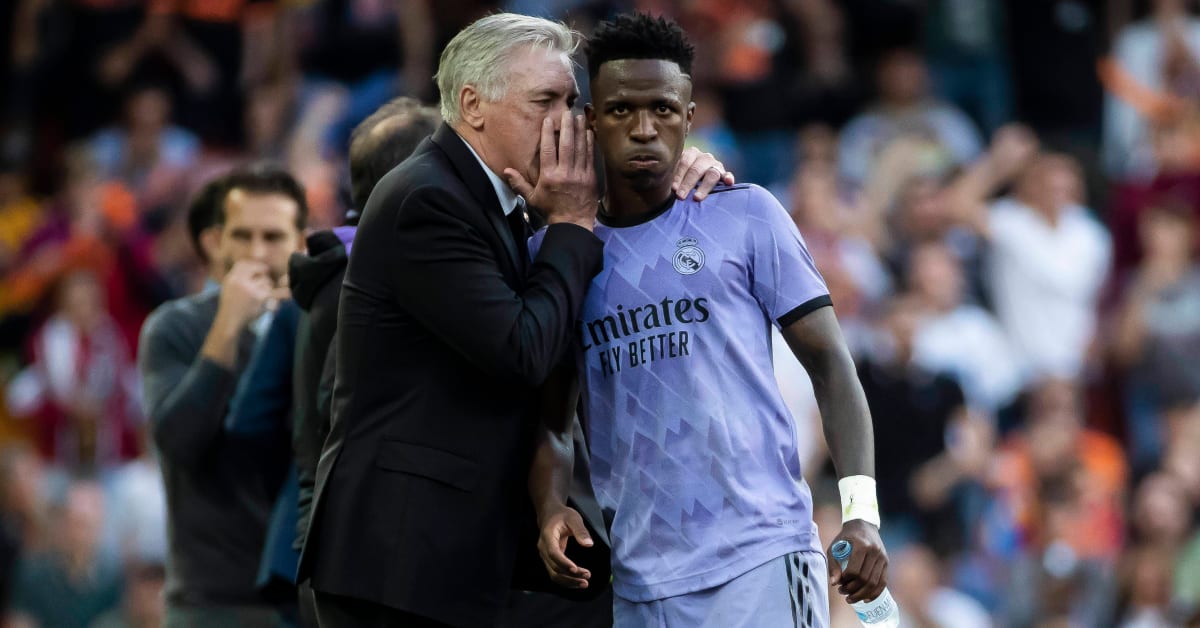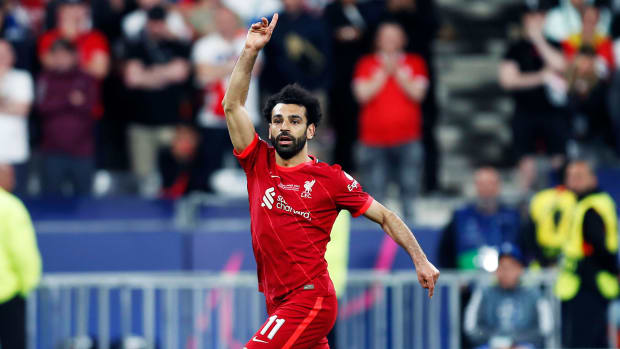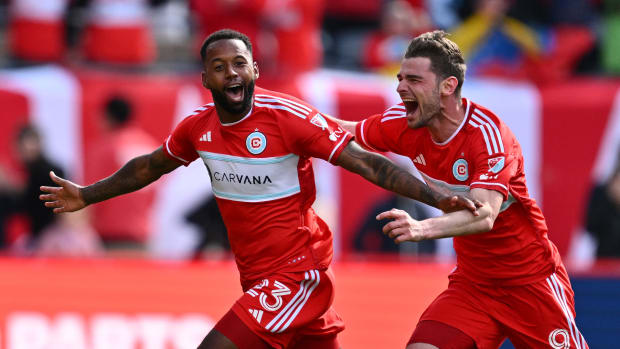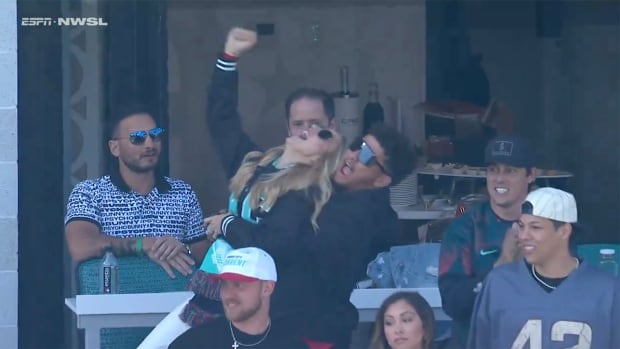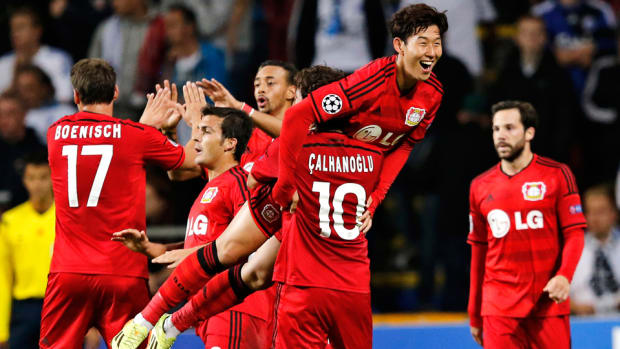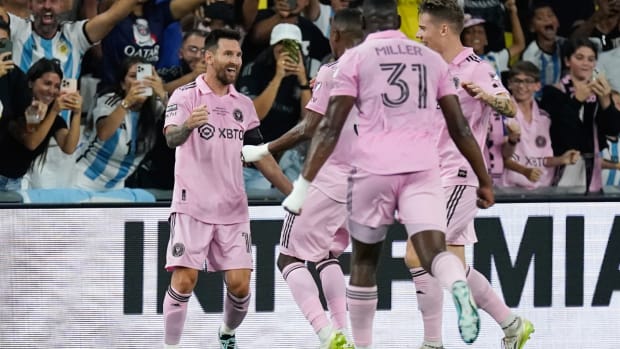Without a Star Striker, Real Madrid Ventures Into Unfamiliar Territory
For the first time in a long time, Real Madrid has a forward problem.
Usually when it comes to its forward line, Real is forward-thinking, always having the pick of the litter when it comes to the best in the world. And it still does. The current forward line of Vinícius Júnior (23 years old) and Rodrygo (22) is proven, while the future is promising after shelling out €37.5 million ($40.7 million) for 17-year-old Brazilian phenom Endrick.
But none of these players is Karim Benzema, nor are they Kylian Mbappé—at least not yet. Welcome to a rarity in modern soccer: a year of Real Madrid without a star striker.
Even more telling is the fact that when the best forwards in the world became available, none ended up at Real Madrid. Last year, Erling Haaland leapt at a better offer from Manchester City, while Robert Lewandowski joined rival Barcelona. (For those who say Lewandowski is past his prime, he finished top of La Liga in goals last season.) Real didn’t necessarily need these players at the time since Benzema, despite being 34 at the time, was coming off a 44-goal season that would eventually land him the Ballon d’Or.
But then, after reportedly agreeing to a one-year extension with Real this summer, Benzema announced a surprising exit to Saudi Arabia, where he will earn €100 million per year. It was a decision that sent shockwaves through Real Madrid, considering the club was losing a player with more than 200 league goals.
Still, Real had plenty of time to find a new centerpiece in attack, and a striker like Harry Kane presented the perfect fit: 30 years old and in his prime, a proven scorer at every level with a lengthy track record to show for it, global name recognition and brand appeal. Yet Real hardly made an effort after initially expressing interest, letting England’s all-time goalscorer head to Bayern Munich for €100 million.

Real Madrid manager Carlo Ancelotti (left) has looked to Vinícius to lead the forward line this season.
IMAGO/NurPhoto
All signs point to Real Madrid’s longstanding pursuit of Mbappé as the reason. Real Madrid likes Mbappé and Mbappé likes Real Madrid, but things are starting to feel a bit like two crushing friends who would be a match made in heaven, yet continue to wait for the other to make the initial move. And now that Mbappé nears signing a new contract at PSG after months (years?) of transfer drama, Real Madrid may have to shell out €250 million if rumors of a potential release clause are correct. That’s a lot of money to say you like, like someone, especially when he said he’d leave Paris for free next summer. Modern romance in modern soccer, in a nutshell.
That predicament brings us to Real’s predilection for a star striker, and this season’s striking lack of one. Without Benzema, manager Carlo Ancelotti has switched from Real’s unrelenting 4-3-3 of the past to a more methodical 4-4-2/4-3-1-2 centered on Vinícius, Rodrygo and English midfield phenom Jude Bellingham, who arrived this summer from Borussia Dortmund for $100 million and has future Ballon d’Or written all over him.
“We think that Bellingham’s arrival makes up for Karim’s absence,” Ancelotti told Italy’s Radio Serie A. “He is a serious kid, mature and with a lot of talent. What he has been able to do so far doesn’t surprise us. The only surprise is that he is only 20 years old.”
As an attacking midfielder, Bellingham has gotten off to a scintillating start with three goals in his first two La Liga games. But the model for an attacking midfielder at the Bernabéu will always be the legendary Zinedine Zidane, and the Frenchman never scored double-digit goals in La Liga. Sure, Bellingham may have a more advanced role than Zidane in his five years at the club, but it’s completely unfair to expect him to take on Benzema’s workload.
Neither should Rodrygo and Vinícius be expected to replicate Benzema’s output. Both are, at the moment, wingers being forced to play as center forwards. To put things in perspective, Benzema averaged just over 22 La Liga goals per season over the past five years from a central forward role. Although still young, Rodrygo’s single-season career high in La Liga is nine goals; Vinícius’s is 17, of which Benzema assisted six, another facet of the Frenchman’s game that will be missed at Real. Meanwhile, signing 33-year-old striker Joselu on loan from Espanyol is expected to be only a stopgap measure to relieve the Brazilian phenoms.
This summer, Vinícius switched his number to the famous No. 7 shirt, while Rodrygo changed to No. 11. But the classic striker’s No. 9 is still vacant after Benzema’s exit, and it’s no longer certain it will be Mbappé’s. Whoever does fill that shirt next will be making a major statement about Real’s future.
Ronaldo Nazário. Ruud Van Nistelrooy. Raúl. Gonzalo Higuaín. Cristiano Ronaldo. Benzema. That is the list of Real Madrid’s top goalscorers since 2002–03—a list that features six Ballon d’Or awards and at least 18 goals every season. This year, a new name will be added to the list, but will he live up to the prestige?
